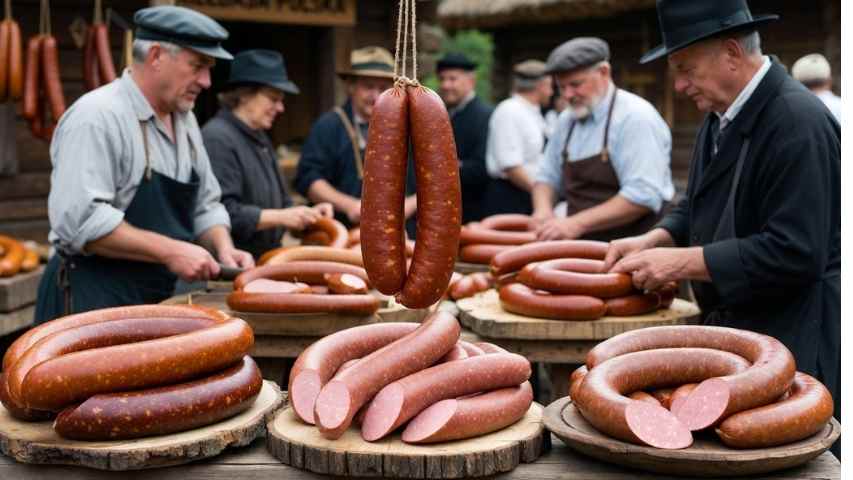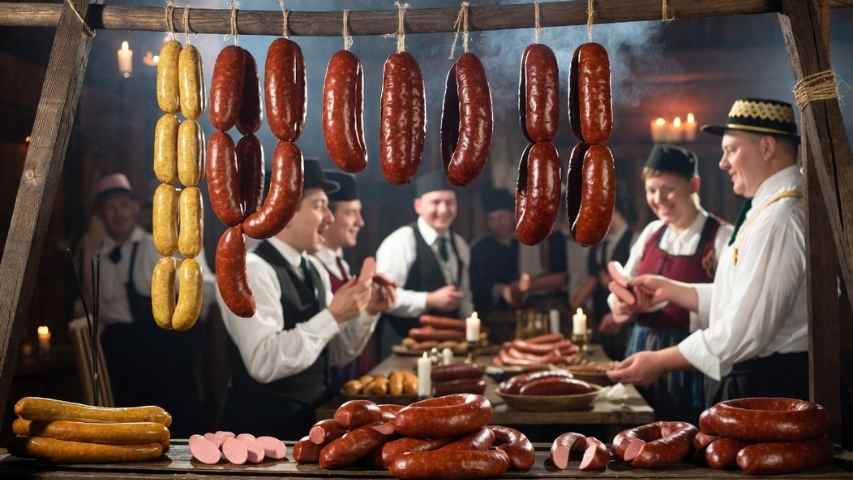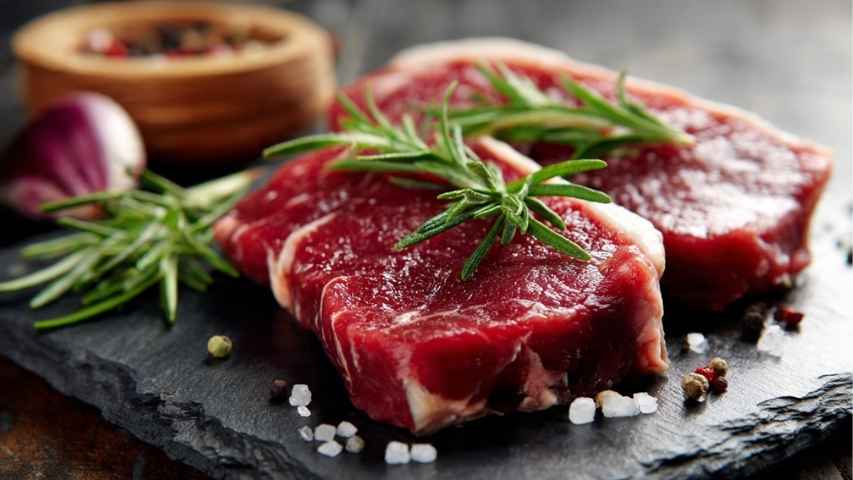If you’ve ever noticed a U-shaped sausage labeled “kielbasa” next to one called “Polish sausage” at the store, you might have wondered what sets them apart. Many people use these names for the same thing, but there’s actually a long history and many styles behind this well-known sausage.
This guide will tell you all about kielbasa. You’ll learn about its history, the different types you might see, and some tasty ways to cook it. By the end, you’ll know what kielbasa is and how to enjoy it at home.
A Taste of History

Kielbasa isn’t just a type of sausage—it’s an important part of Polish culture. People in Poland have been making sausage since the 14th century. (Kiełbasa myśliwska staropolska, n.d.) Back then, kielbasa was made from different meats like pork, wild boar, and rabbit. It was a special food at royal dinners, and the smoked versions were useful for feeding merchants traveling across Europe. (History of Polish sausages, n.d.) The preferred meat for kielbasa, and local butchers perfected their Family recipes. However, the 20th century brought significant changes. Under communism, the government introduced standardized recipes, which many felt resulted in a sausage that lacked the quality and flavor of the traditional versions. (Polish Food 101 ‒ Kiełbasa, n.d.)
Even so, Polish families kept making kielbasa their own way and shared their recipes from one generation to the next. When Polish immigrants came to the United States in the late 1800s and early 1900s, they brought these traditions with them. As a result, Polish foods became more popular, and kielbasa soon became a favorite in American stores. (Polish Americans, n.d.)
What’s the Difference Between Kielbasa and Polish Sausage?

This is a common question, and the answer depends on where you are. In Poland, many people wonder about this, and the answer depends on where you are. In Poland, “kielbasa” just means sausage. If you ask for “kielbasa” at a Polish market, someone will likely ask you which kind you want. The word can mean anything from breakfast links to spicy Italian-style sausages. (Kielbasa, 2025)e often used to describe the same specific product: a smoked sausage, typically made from pork, flavored with garlic and marjoram, and shaped like a “U.” While this is the most common association, it represents just one of many kielbasa varieties.
Common Types of Polish Sausage
Most Americans know the smoked, U-shaped sausage, but Poland has many different kinds of kielbasa. If you want to try something new, here are a few popular types to check out.
Kielbasa Zwyczajna (Ordinary Sausage)
This is the classic Polish sausage most people know. The name “zwyczajna” means “ordinary,” but the taste is far from plain. It’s a staple all over Poland. Recipes can be different from one family or butcher to another, but it’s almost always made from pork and seasoned with garlic, black pepper, and marjoram. It’s usually smoked, which gives it a rich, savory flavor.
Biała Kielbasa (White Sausage)
Unlike the smoked varieties, biała kielbasa is a fresh, uncooked sausage. It is primarily made with pork, sometimes with a bit of beef or veal mixed in. The seasoning is similar to smoked kielbasa, featuring garlic, marjoram, salt, and pepper. Because it’s fresh, it must be cooked before eating. You can boil it, pan-fry it, or grill it. Biała kielbasa is a traditional part of the Polish Easter meal and is often served with horseradish or mustard. (10 Traditional Dishes of Polish Easter, 2025)
Kabanos
If you want a snack sausage, try kabanos. It’s like Poland’s version of a Slim Jim, but with a stronger, smoky taste. These long, thin sausages are made from cured pork and are heavily smoked. They’re high in protein and fat, so they make a filling and easy snack, especially for people on keto or paleo diets. (Polska Kielbasa – Wenzel’s Farm, n.d.)
How to Cook Kielbasa
Since the kielbasa commonly found in American grocery stores is precooked, preparing it is all about heating it through and pairing it with flavors that complement its smoky taste. Here are a few simple ways to cook kielbasa.
Simmer on the Stovetop
One easy way is to simmer kielbasa in a pan. Put the sausage in a skillet with a little water, cover it, and cook over medium heat for 10 to 15 minutes, turning it now and then. You can also cut the kielbasa into slices and pan-fry them until they’re browned. This works well for adding sausage to scrambled eggs, pasta, or risotto.
Roast in the Oven
Roasting is a great hands-off method. Place the kielbasa on a sheet pan, perhaps alongside some chopped vegetables like bell peppers, onions, and potatoes. Drizzle everything with a bit of oil and roast at 400°F (200°C) for 20-25 minutes, or until the sausage is heated through and the vegetables are tender.
Fire Up the Grill
Grilling kielbasa gives it a nice char and brings out its smoky flavor. You can grill it whole or cut it up for kebabs. Put it on a hot grill and cook for about 5 to 7 minutes on each side, until it has grill marks and is heated through. Grilled kielbasa tastes great by itself, in a bun, or with your favorite barbecue sides.
Discover the Flavor of Kielbasa
No matter what you call it, kielbasa is a tasty and versatile meat that works in many dishes. It started in 14th-century Poland and is now popular in American kitchens, thanks to its rich history and great flavor.
Now that you know more about this classic sausage and how to enjoy it, you can pick up a package the next time you shop. Try it in your favorite skillet meal, grill it at your next barbecue, or enjoy it with sauerkraut and mustard for a traditional Polish taste.


















